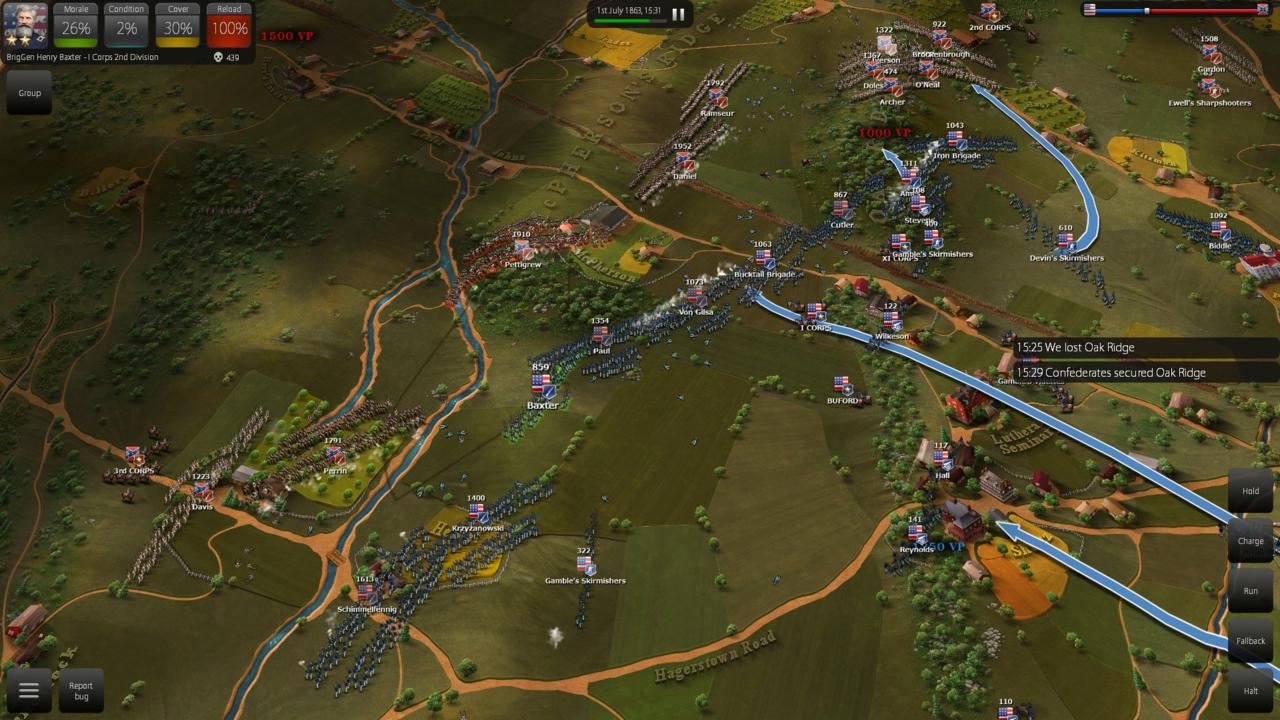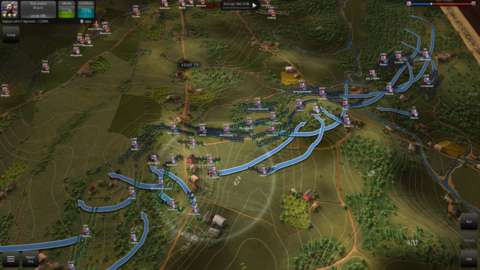Ultimate General: Gettysburg Early Access Review
The burden of command.
GameSpot's early access reviews evaluate unfinished games that are nonetheless available for purchase by the public. While the games in question are not considered finished by their creators, you may still devote money, time, and bandwidth for the privilege of playing them before they are complete. The review below critiques a work in progress, and represents a snapshot of the game at the time of the review's publication.
The only feature of the Gettysburg landscape I can still summon up from a childhood full of educational...let's call them "vacations," no longer actually exists, as I recently learned. The controversial Gettysburg National Tower, an observation deck that once loomed over the battlefields from a neighboring property, was demolished back in 2000, after the Park Service's domain was able to get a few hundred feet more eminent. I gather they made quite a thing of it: detonating the giant tower along to simulated cannon fire on the anniversary of the battle. You can watch it on YouTube.
"It's the only vantage point to see the entire spectrum of the battlefield," the lawyer for the tower's controlling group had argued at the time. I can appreciate the sense of that, playing Ultimate General: Gettysburg. The strategy game takes in the hilly Pennsylvania scenery at a similar remove, top-down and distant. From this tactician's view, fields and farmlands become striated earth tones, and forests are reduced to tufted copses of green lint. Tin soldier troops cluster together into rectangles not unlike the red and blue pictograms I recall of Ken Burns' The Civil War, crenelating hilltops and cascading downfield like Tetris pieces.

This Gettysburg has the look of a modeler's diorama, which seems more than appropriate, given the way the battlefield's little promontories and valleys have been rendered into fetish objects over the last century and a half, to be turned over and over in the hands and imaginations of historical enthusiasts. Their storied names--Cemetery Ridge, the Peach Orchard, Devil's Den--are raised up in embossed arcs, a loving cartographic detail that extends out to the decorative inlays of the board that frames the game space. To better simulate the strategic importance of these locations, their successful seizure and control accrues "victory points" for your chosen side of the Mason-Dixon Line.
Ultimate General: Gettysburg certainly does have the feel of a board game, albeit one whose pieces are perpetually churning in their own independent motions. It has that armchair general appeal, I think, of tilting the board over and clearing the space for some new permutation: What if the Union overextended itself in the northwest ridges this time? What if Pickett never charged? It's a simple enough matter to draft new renditions of the historic battle; simply trace a path across the terrain, and your units will follow it faithfully, trading fire with whatever force you direct them toward. The action imbues the game with a wonderful tactility. It makes me feel like Tywin Lannister in Game of Thrones, sliding figurines across a map with grim purpose. I want to lecture at Nikolaj Coster-Waldau about the importance of family legacy while skinning a deer.
I muck it up almost immediately, though, the temptation to draw my units into elaborate figures overwhelming comparatively basic strategic needs. I keep forgetting that this is the Civil War, and all the Napoleonic feints and swooping cavalry charges I conjure aren't going to win the day here. Thankfully, there were three days in the whole Gettysburg affair, and Ultimate General uses sundown as a convenient intercession point to step in and clean up whatever mess I've inevitably made of the battlefield. It's here where the importance of position makes itself known: even an early string of conquests can prove ultimately damaging, should they result in you starting the next day on untenable ground, far beyond the reach of reinforcements.

That's spoken from experience, of course. I'm no ultimate general. I tend to go inattentive to whole swaths of my formation for minutes at a time, if I'm being pressed hard on another front, or there's an especially good episode of House Hunters International on. But the clever artificial intelligence manages well enough on its own, and it's mesmerizing to find my troops drawing back, resolving themselves into a respectable interpretation of a defensive perimeter, and returning fire.
Sometimes though, I'm far too late, and when I finally cast my eyes toward my units, they've turned tail and fled wholesale. They're unclickable when they do so, and remain that way until they've reached some distance from the front lines they feel more personally comfortable with. In one catastrophic instance, a brigade of mine fighting perpendicular to the grain of battle was driven thusly back--straight through the crossfire in the no-man's-land between the two larger armies. It may not surprise you to hear that this had consequences on morale.
Morale, Ultimate General argues, must be maintained above all else. It's fragile: it wavers under artillery fire, and it falters at the sight of an enemy charge. It rebounds slowly, behind the reassuring cover of fences and trees, or under a general's calming stewardship. It's one of the few facets of battle the otherwise minimalistic interface stoops to representing with a hard number, though even that's hardly necessary. You can feel morale shifting behind the battle lines' ebb and flow, sense the hesitation in a decimated unit when you try to usher it back into the line of fire.

There are no routs in Ultimate General: Gettysburg. Even in the most lopsided victories the game can muster, tens of thousands lie dead for both Union and Confederacy. Absent options to mitigate all that death, I find myself nursing egos instead: fretting over exposed brigades, marveling at units asked to endure attack after attack, and pitying those who have clearly endured too much. There's a wonderful granularity to that sort of empathy, something that isn't normally legible from this high up, from this long passed.
What's There? | A variable, single-player Gettysburg scenario that spans the battle's three days, changing based on control of the field.
|
What's To Come? | Multiplayer, along with additional weekly patches that continue to tweak balance and add cosmetic features. |
What Does it Cost? | $9.99 during early access, with the price expected to rise at full release. |
When Will it Be Finished? | Late summer. |
What's the Verdict? | Ultimate General: Gettysburg's early access status shouldn't deter anyone from its balanced, expressive take on warfare. Its stripped-down interface and slightly ponderous pace direct your focus to where it's best served: on terrain, tactics, and morale.
|
Got a news tip or want to contact us directly? Email news@gamespot.com
Join the conversation